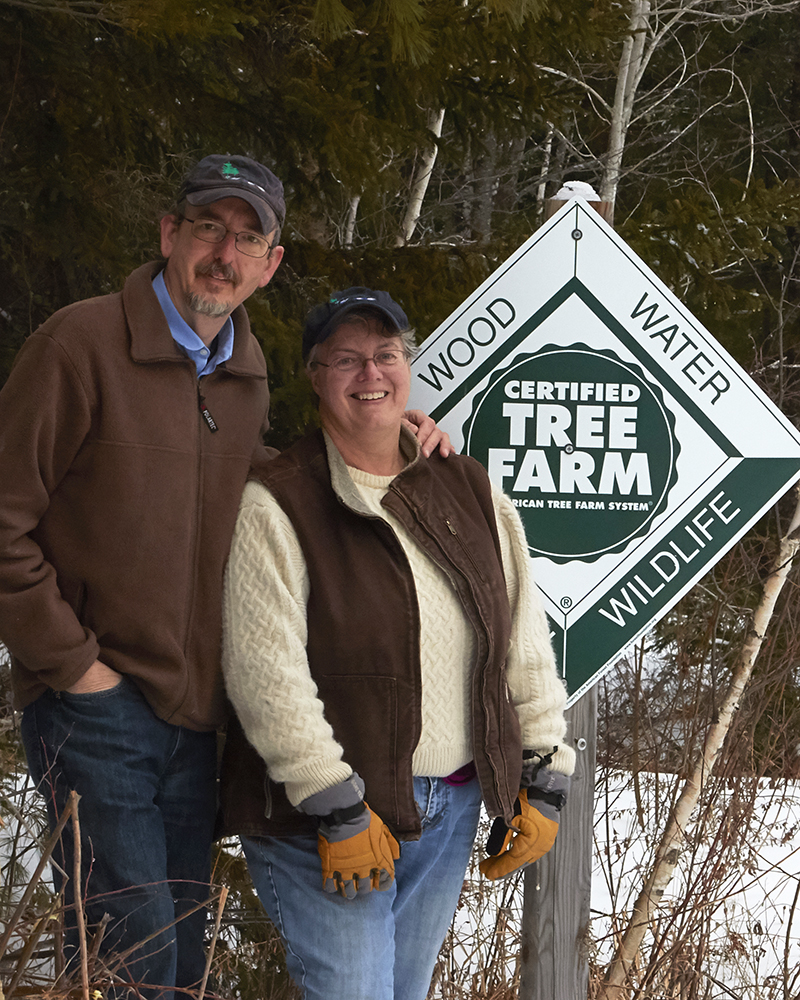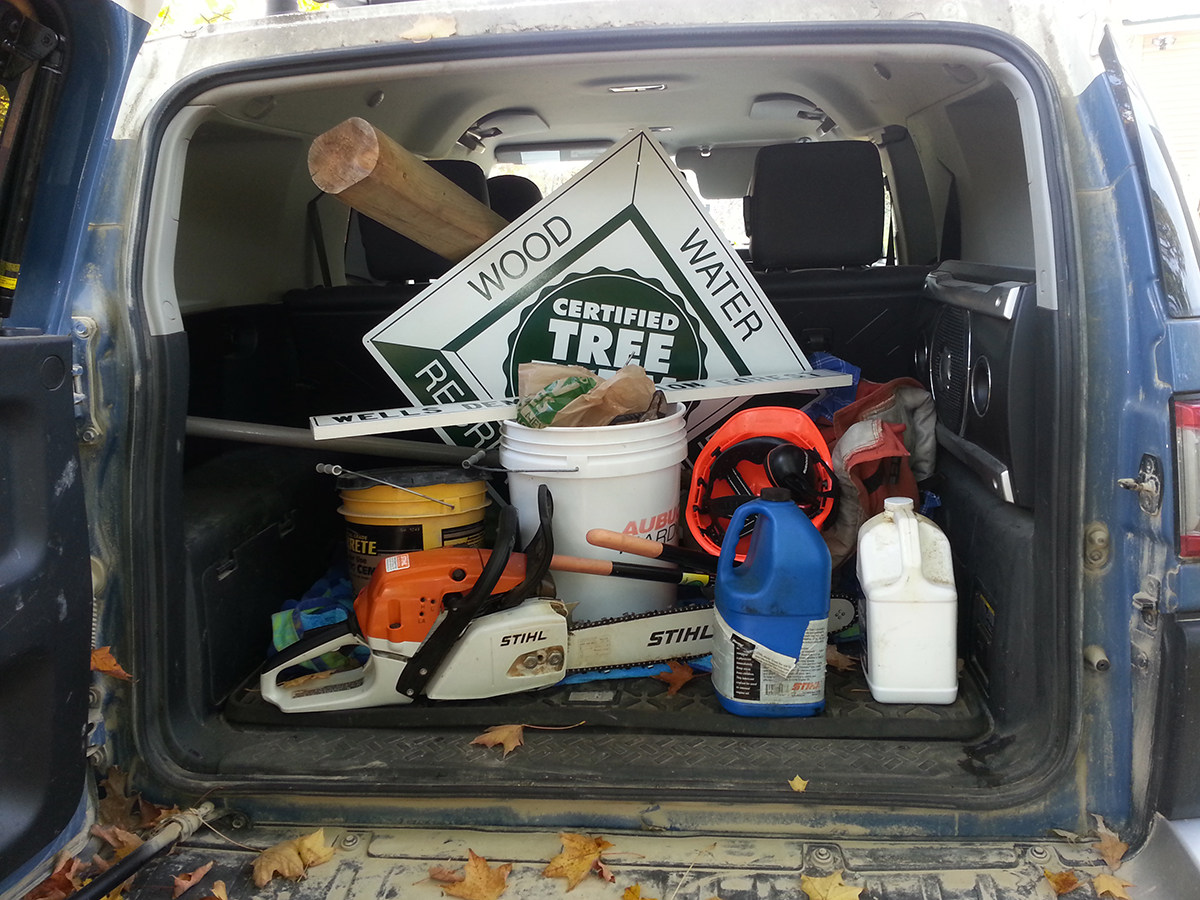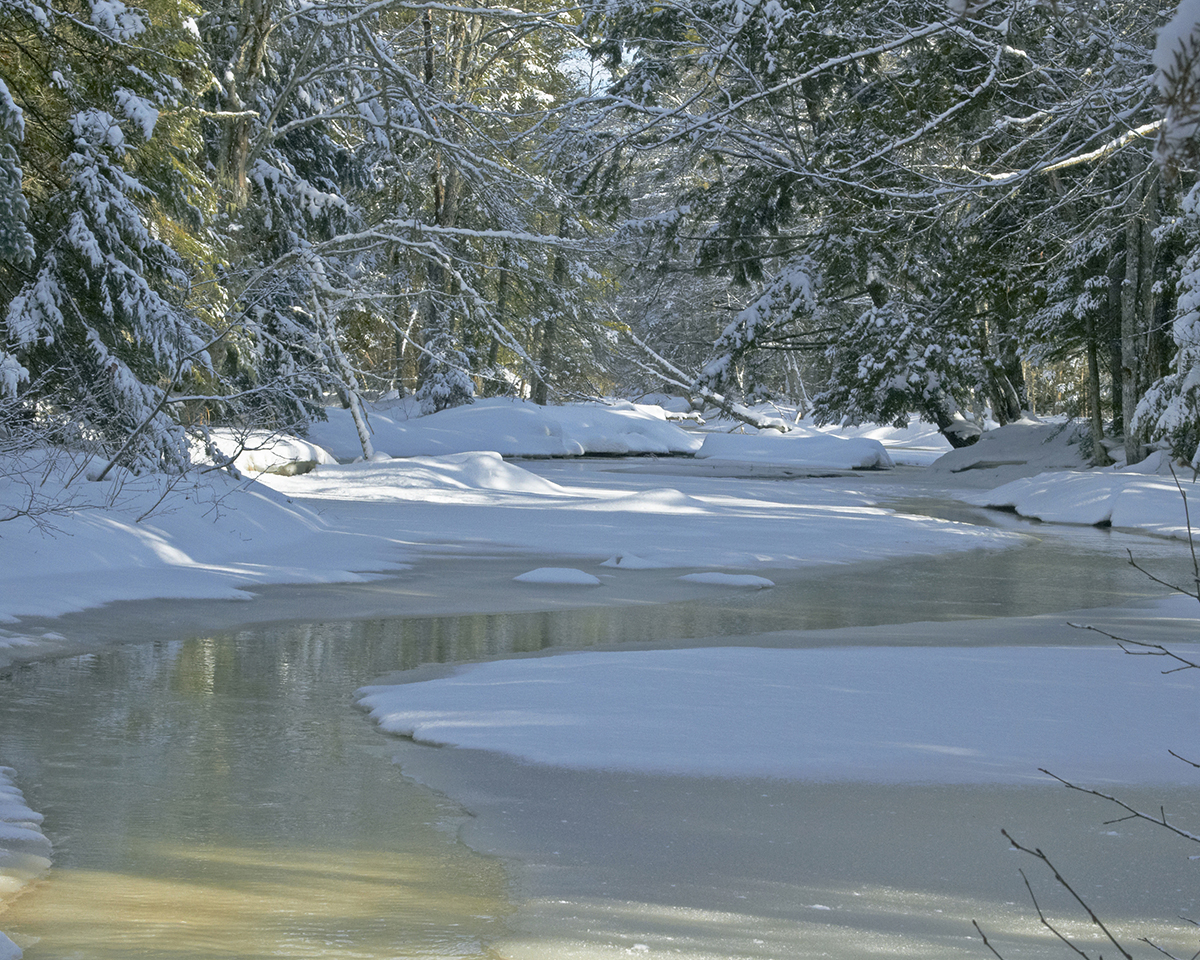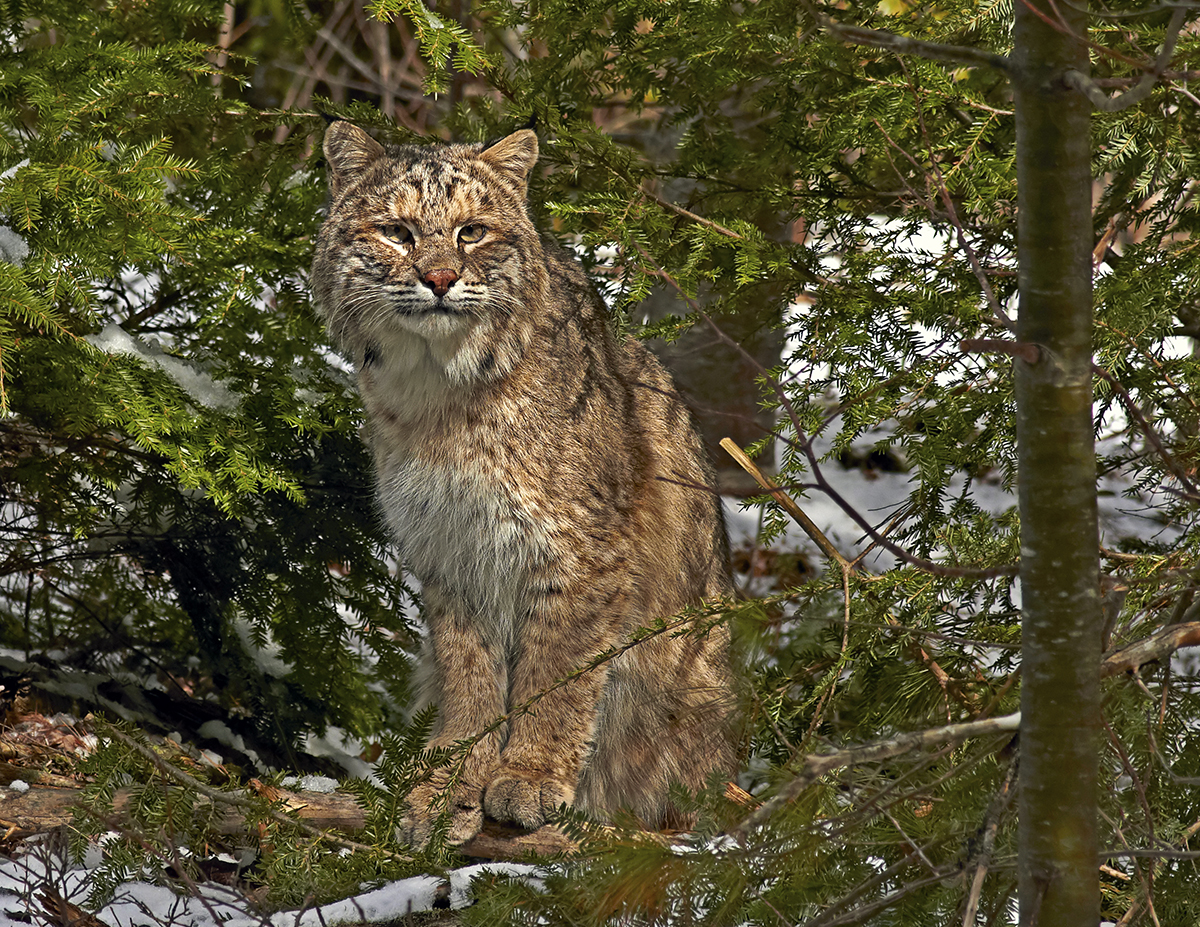Pam and Bryan Wells from Maine
 What Makes Them Outstanding?
What Makes Them Outstanding?
Pam Wells enrolled in the undergraduate forestry program at UMaine at a time when women were not considered viable candidates for the forest industry. After realizing the long odds of a career in her area of interest, Pam choose an alternate career in social work. Her interest in the forest industry never diminished however, and when a large tract of forestland close to where she lived became available she and her husband, Bryan, purchased it. The property was a classic example of woodland abuse having been repeatedly hi-graded until the final harvest and sale. Now overstocked with low-quality species, brambles and a spider web of old skid trails Pam started the process of actively restoring the property to a productive state. This began with researching her options, enrolling the property with NRCS, having an NRCS CAP 106 management plan done, finding what precommercial projects would benefit the property,working with a chainsaw and clearing saw herself to reduce stocking on small diameter stands and being funded by NRCS for PCT of 200 acres and other projects to benefit her property. She has also enrolled in UMaine again for forest management classes so she can better understand her management options for the property. One of Pam's most prized possessions is the increment borer Bryan got her as a birthday present.
Tree Farmer Story
Pam Wells is a Maine native and she theorizes her love of the forest has been bred into her as her ancestors were all involved in some type of outdoor related occupation. Her two favorite smells are those of fresh sawdust and soil. Pam sees herself as somewhat of a tomboy because she preferred to spend time outside as a child and continues that preference today, spending as much time as she can in her beloved forest. The tract of property Pam and her husband Bryan purchased is traditional industrial forest land that has gone through several owners. Each owner had their own management style and harvests were carried out accordingly.
The last owner was the type of company that bought the property, cut the majority of merchantable timber and quickly resold it. The Wells’ bought a 1031 acre lot that had the final harvest as a hi-grade leaving dense thickets of balsam fir and mixed hardwoods separated by a spider web of rutted harvest corridors. But, Pam and Bryan saw potential. The property is unique in many ways. It is remote in the sense of location because it is on aprivate gravel logging road shared and maintained by large industrial landowners scattered overan unfragmented forested landscape of many thousands of acres. There is no electricity, no enforced speed limits and no services offered where log trucks and moose outnumber people. But as remote as the property seems, it is 30 minutes from a medium size town with all the amenities, a university, library and Interstate 95. A major stream bisecting the property is one of the reasons Wells’ decided to make the purchase.
Sunkhaze Stream cuts through the middle of the lot and Sunkhaze National Wildlife Refuge is an a butter, both being unique themselves with a profound influence on the ecology and character of the Wells’ forest. It is theorized the stream was the site of log drives in the early 1900s. There are the remnants of a dam and the NRCS stream biologist suggests that rocks in the stream bed were probably bulldozed out of the stream channel to allow for the drives to take place. There was also a branded log found close to the stream further suggesting drives took place here. The harvests that occurred throughout the history of the property left a forested buffer along the stream giving a glimpse of what the original forest must have looked like. Large hemlock, white pine and mixed hardwoods line the banks creating shade for the stream and the organisms living there.One of Pam’s many talents is as a published photographer and some of her wildlife photos taken on their property are featured in this application.
butter, both being unique themselves with a profound influence on the ecology and character of the Wells’ forest. It is theorized the stream was the site of log drives in the early 1900s. There are the remnants of a dam and the NRCS stream biologist suggests that rocks in the stream bed were probably bulldozed out of the stream channel to allow for the drives to take place. There was also a branded log found close to the stream further suggesting drives took place here. The harvests that occurred throughout the history of the property left a forested buffer along the stream giving a glimpse of what the original forest must have looked like. Large hemlock, white pine and mixed hardwoods line the banks creating shade for the stream and the organisms living there.One of Pam’s many talents is as a published photographer and some of her wildlife photos taken on their property are featured in this application.
Due to the location of the property in relationto the refuge, there seem to be greater populations and diversity of wildlife here than an average woodlot would hold. Pam has close-up shots of a wide variety of animals and organisms that are not commonly seen.Pam started out in her career as a student in forestry at the University of Maine. However, due toa number of factors, Pam switched to social work which is her current position, although her loveof forestry never diminished. After the Wells purchased the forest, Pam began researching heroptions for how to restore the forest to a healthy productive state. Her research led her to the Natural Resource Conservation Service (NRCS) office in Bangor ME where she found there was assistance doing what she wanted to do with her property. Her first step was to have a Stewardship plan prepared that outlined steps over the next 10 years that would benefit the property. Pam started precommercially thinning the hundreds of overstocked acres herself, but soon realized she needed help.
A company specializing in PCT was brought in and with the assistance from NRCS was able to thin 200 of the worst acres. There was an existing gravel road system on the property left from the last harvest. The roads were badly overgrown, so again NRCS helped defray the cost of mechanically opening the roads back up so they were passable. The more Pam did on the property, the more she found that needed to be done and the more she realized she needed more education in forestry. Pam again enrolled as a forestry student at the University of Maine and has taken classes in Silviculture, Stream Ecology and others to better understand the needs and potential of her forest. Pam has combined her background in social work with her interest in forestry to help mentor other forestry students and landowners as to what options are available for good forest stewardship. Pam also teaches a graduate level social work class at UMaine. Pam has combined her background in social work with her interest in forestry to help mentor other forestry students and landowners as to what options are available for good forest stewardship.
Wood
Management of the wood resource on the Well’s Forest is primarily precommercial. Due to the past history of heavy cuts ending with the final hi-grade, the forest is overstocked with small diameter, low quality species. The management has concentrated on identifying the areas having better soils and thinning these stands using PCT, crop treerelease (CTR) or some combination of the two. There was a small commercial mechanical harvest of about 12 acres which was more of are search trial plot to study the effect of low density pine thinning. This was done at the start of mud-season and was not intended to be an income producer. Future management of the wood resource will include additional acres of PCT andidentifying better quality hardwood stands for precommercial CTR.
Water
 The property is bisected by 2.25 miles of Sunkhaze Stream complete with a small gorge, old tannery dam and evidence of log drives. There are well defined buffers along the stream and there is no sedimentation presently occurring. The management of this resource will continue to focus on improving organism habitat and diversity by conventional and unconventional practices as mentioned previously. Because the stream bisects the lot and access from the east side is poor, there is a need to cross the stream to be able to manage the rest of the property. Different stream crossing structures are being considered and at some point a permanent stream crossing will need to be established.The eastern part of the lot was harvested at the same time the western half was and awinter road was roughed out to access the stands. The road was of poor quality and is now mostly grown in with a number of cross drains that have the culverts washed out. To be able to access the entire north eastern corner of the property the road will need to be reestablished with proper drainage and ditches so that water is directed to filter areas. This will be the next area to focus for management.
The property is bisected by 2.25 miles of Sunkhaze Stream complete with a small gorge, old tannery dam and evidence of log drives. There are well defined buffers along the stream and there is no sedimentation presently occurring. The management of this resource will continue to focus on improving organism habitat and diversity by conventional and unconventional practices as mentioned previously. Because the stream bisects the lot and access from the east side is poor, there is a need to cross the stream to be able to manage the rest of the property. Different stream crossing structures are being considered and at some point a permanent stream crossing will need to be established.The eastern part of the lot was harvested at the same time the western half was and awinter road was roughed out to access the stands. The road was of poor quality and is now mostly grown in with a number of cross drains that have the culverts washed out. To be able to access the entire north eastern corner of the property the road will need to be reestablished with proper drainage and ditches so that water is directed to filter areas. This will be the next area to focus for management.
Wildlife Including Threatened and Endangered Species
The wildlife component of the Wells’ Forest is managed through default by the management of the timber and water resources. Pam and Bryan are constantly monitoring wildlife species and Pam has a collection of hundreds of professionally produced photos of different species found on her property, some of which are included with this application. Pam has documented an increase in the number and variety of species using their property by trail cams, blinds and long camera lenses. What they have discovered is there are more hawks and owls since the PCT was finished which is attributed to better visibility of the ground since the crowns were opened up.
property, some of which are included with this application. Pam has documented an increase in the number and variety of species using their property by trail cams, blinds and long camera lenses. What they have discovered is there are more hawks and owls since the PCT was finished which is attributed to better visibility of the ground since the crowns were opened up.
Recreation and Aesthetics Including Special Sites
The Wells’ have designated their property as the Wells’ Demonstration Forest for the express purpose of demonstrating good forest stewardship to the public. They have committed their resources, time and considerable talent in enlisting resource professionals to guide them in the restoration of a highly degraded forest to one o fproductivity. There are walking trails already in place to important parts of the property. There will be signage in place this summer explaining what the different stops are andtheir significance to the history of the property or management of a resource. More trails are planned and a trails map and brochure explaining the management options available are in the works. Some of the trails are narrow and Pam has been working on widening them out. A flail mulcher mounted on a Bobcat skid steer will be brought in this summe rto smooth trails and mulch slash and brush for easier walking. Work on the stream restoration will continue and the old dam and tannery site will be made more accessible. The Wells’ are the epitome of good forest stewardship and they do this because of their love of the forest and not because they expect compensation or recognition. They are good stewards because they want to do what is best for their property.


